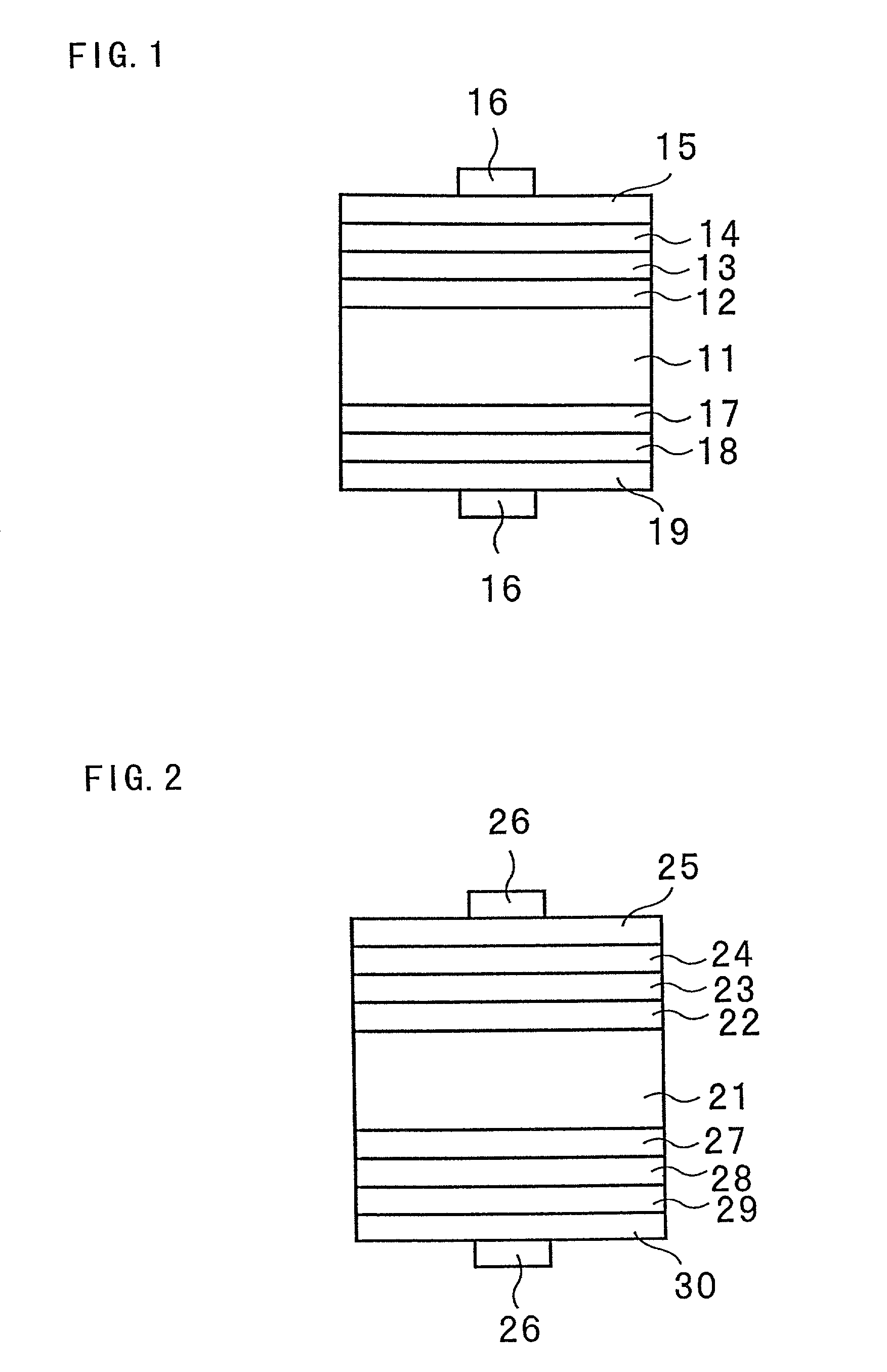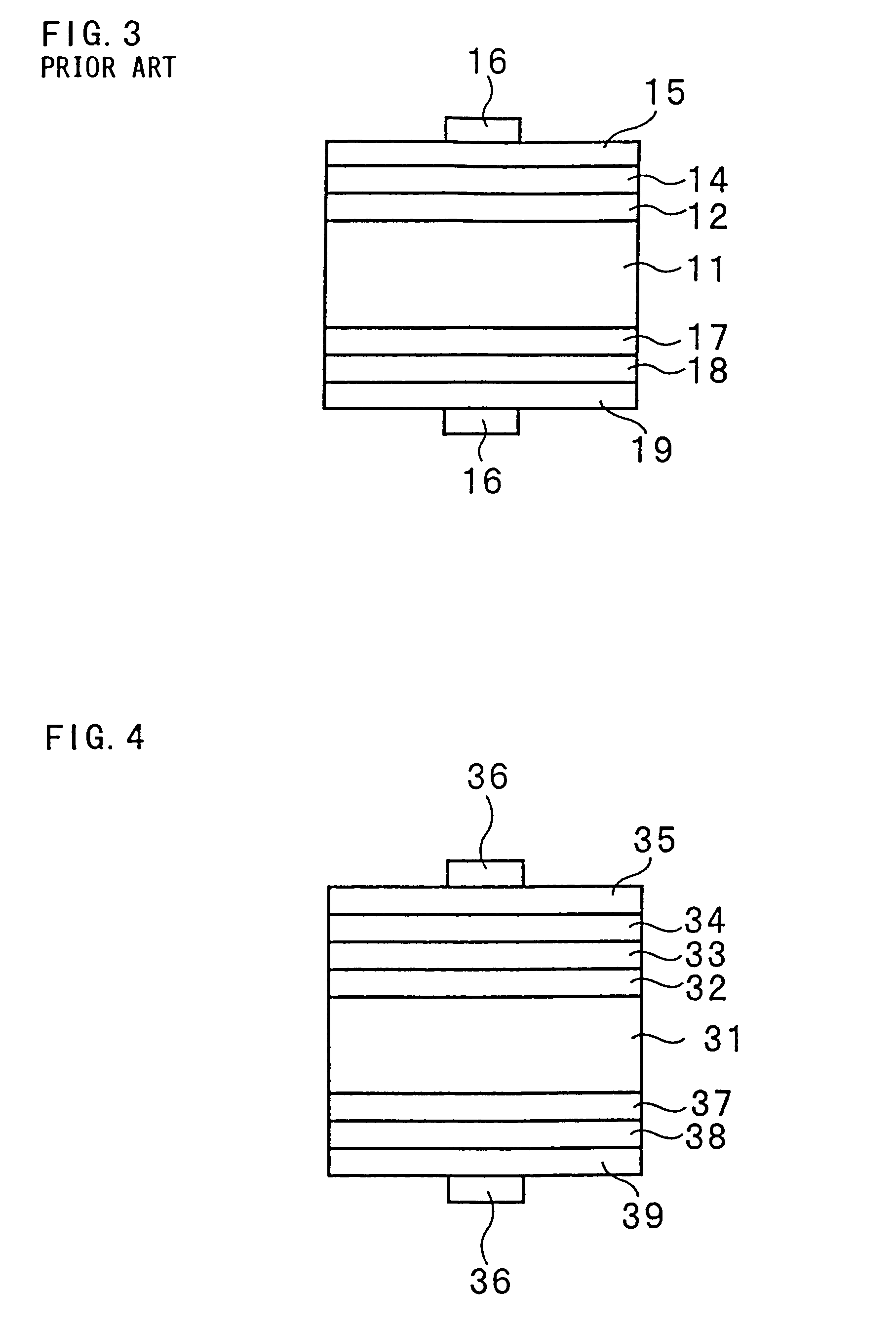Photovoltaic device with intrinsic amorphous film at junction, having varied optical band gap through thickness thereof
- Summary
- Abstract
- Description
- Claims
- Application Information
AI Technical Summary
Benefits of technology
Problems solved by technology
Method used
Image
Examples
first embodiment
(First Embodiment)
[0030]FIG. 1 is a typical sectional view showing a photovoltaic device according to a first embodiment of the present invention. With reference to FIG. 1, an intrinsic amorphous silicon layer 12 is formed on the light incidence side of an n-type single crystalline silicon substrate 11. An intrinsic amorphous silicon carbide layer 13 is formed on the intrinsic amorphous silicon layer 12. The intrinsic amorphous semiconductor film according to the present invention is constituted by the intrinsic amorphous silicon layer 12 and the intrinsic amorphous silicon carbide layer 13. Ap-type amorphous silicon film 14 is formed on the intrinsic amorphous silicon carbide layer 13. A transparent electrode 15 is formed on the p-type amorphous silicon film 14 and a collector electrode 16 is provided on the transparent electrode 15.
[0031]An intrinsic amorphous silicon layer 17 is formed on the back face side of the n-type single crystalline silicon substrate 11 and an n-type amorp...
second embodiment
(Second Embodiment)
[0047]FIG. 2 is a typical sectional view showing a photovoltaic device according to a second embodiment of the present invention.
[0048]With reference to FIG. 2, an intrinsic amorphous silicon layer 22 is formed on the light incidence side of an n-type single crystalline silicon substrate 21 and an intrinsic amorphous silicon carbide layer 23 is formed on the intrinsic amorphous silicon layer 22. The intrinsic amorphous semiconductor film according to the present invention is constituted by the intrinsic amorphous silicon layer 22 and the intrinsic amorphous silicon carbide layer 23. A p-type amorphous silicon film24 is formed on the intrinsic amorphous silicon carbide layer 23, and a transparent electrode 25 and a collector electrode 26 are formed on the p-type amorphous silicon film 24.
[0049]An intrinsic amorphous silicon layer 27 is formed on the back face side of the n-type single crystalline silicon substrate 21 and an intrinsic amorphous silicon carbide layer...
third embodiment
(Third Embodiment)
[0058]FIG. 4 is a typical sectional view showing a photovoltaic device according to a third embodiment of the present invention. With reference to FIG. 4, an intrinsic amorphous silicon layer 32 is formed on the light incidence side of an n-type single crystalline silicon substrate 31 and an intrinsic amorphous silicon layer 33 is formed on the intrinsic amorphous silicon layer 32. The intrinsic amorphous silicon layer 33 is formed to have a relatively larger amount of hydrogen to be contained than the intrinsic amorphous silicon layer 32. More specifically, the intrinsic amorphous silicon layer 33 is formed to have an optical band gap expanded with an increase in the amount of hydrogen to be contained. An intrinsic amorphous semiconductor film according to the present invention is constituted by the intrinsic amorphous silicon layer 32 and the intrinsic amorphous silicon layer 33.
[0059]A p-type amorphous silicon layer 34 is formed on the intrinsic amorphous silico...
PUM
 Login to View More
Login to View More Abstract
Description
Claims
Application Information
 Login to View More
Login to View More - R&D
- Intellectual Property
- Life Sciences
- Materials
- Tech Scout
- Unparalleled Data Quality
- Higher Quality Content
- 60% Fewer Hallucinations
Browse by: Latest US Patents, China's latest patents, Technical Efficacy Thesaurus, Application Domain, Technology Topic, Popular Technical Reports.
© 2025 PatSnap. All rights reserved.Legal|Privacy policy|Modern Slavery Act Transparency Statement|Sitemap|About US| Contact US: help@patsnap.com



